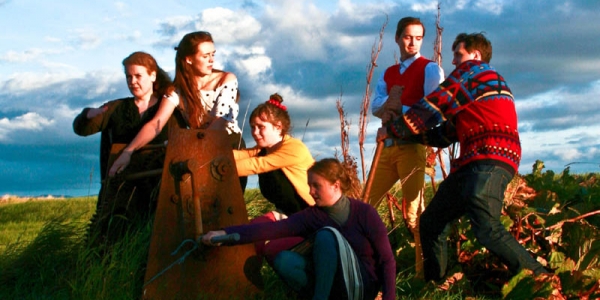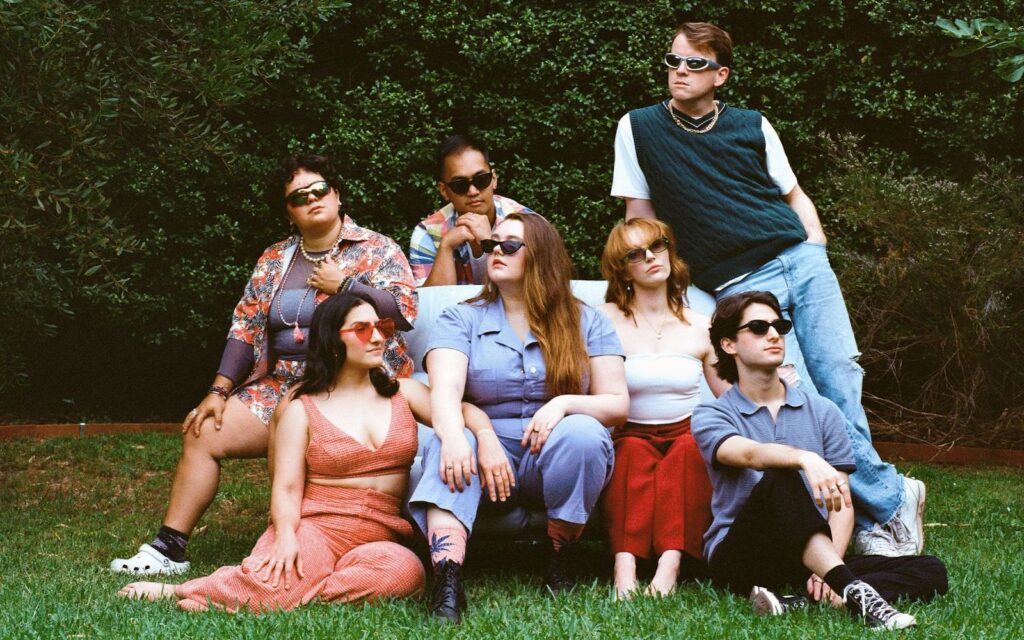Her Icelandic accent is oddly beautiful, with its surprising discordance and lyrical bounce. So it’s no surprise that a quartet of violinists (who used to be the former all-female string section for post-rock group Sigur Rós) has now developed into a mixed sextet wowing international audiences on their own terms. Fresh from the release of their album Puzzle in 2010, Amiina are a band unafraid to experiment with style; they fuse minimalist, contemporary and classical sounds with electronic loops and an unexpected instrument or two. The group are coming down to the Melbourne Recital Centre in January with their eclectic collection of musical saws, music boxes, glockenspiel and of course, their violins.
Sigfúsdóttir met the original three other members of Amiina at Reykjavik College of Music while she was studying, but she’s so gosh-darn polite that it’s hard to get to the core of Sigfúsdóttir’s own musical aspirations. It’s clear she sees Amiina as a truly collaborative effort.
“I think [collaboration] is a vital part of how the music ends up something…rather than one person with a band [playing] in the background. It’s a vital part of how the music is picked and how it sounds. It makes it more layered and intricate rather than having one focal point.” Interestingly, Sigfúsdóttir says that the music tends to create its own entity in that kind of environment. “We looked at the music as something external to us all, kind of a mixture of a four. It was surprising because I think if any one of us were to make music it would never be exactly like that.”
Icelandic music has become quite revered for its rhythmic, almost hauntingly melodious sounds. But ask Sigfúsdóttir whether she recognises any similarities between Amiina and compatriots like Sigur Rós, Björk and Emilíana Torrini (of Jungle Drum fame) and you’re likely to get bashfulness mixed in with an excellent analogy.
“I don’t really hear the very famous sounds. It’s just like having siblings; you don’t really see the likelihood yourself with your family but someone from the outside might tell you that you all look the same.”
Sigfúsdóttir attributes much of Icelandic’s musical ability to a strong musical education history. “I think part of it is probably because we’ve had, in the past 40 or 50 years, a pretty good music education system. A lot of people from Iceland practise music as a hobby of some sort, they sing in a choir, they play in a band…It’s very common that kids grow up with a lot of music around them, it’s very natural when you are a teenager to grab an instrument and start a band. And also because at least here in Reykjavik, everything is quite small and close and easy to, for example, borrow instruments or gear, and people are helping each other out. So when you’ve formed a band, it’s a very friendly community to join.”
It’s no surprise, then, to hear that Amiina’s musicians are multi-instrumental. How many instruments does Sigfúsdóttir play? “I have no idea! It’s a tough one…I would probably say around ten, or whatever gives a beautiful sound or an interesting sound, I’ll play.” But with 15 to 20 instruments following them to Melbourne, the sheer number of instrumental changes between musicians certainly makes thing interesting on stage. “When we thought about touring or playing live it was very complex…the switching between instruments was almost like we had to choreograph it so it was more like a ballet or choreography…It’s kind of what we’ve always done, to play an instrument and run to another and switch. I think it’s also who we are to maintain that to a certain extent.”
Perhaps Icelanders are even more chilled than Australians, because getting Sigfúsdóttir to identify any specific direction for Amiina’s future musical collaborations is near to impossible. Aside from various band members having study and parenting commitments, it seems Amiina and group member Sigfúsdóttir are just happy to do what the music does – go with the flow. “We don’t [make] decisions where to go or what kind of songs to do, it’s more just if we let it happen and we let the music just flow. It’s almost like we are serving the music, but not the other way [around]. I think that’s a very important part for us, to not force anything.”
BY SIOBHAN ARGENT







